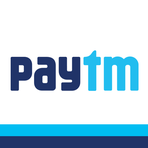The UPI Landscape: A New Era of Digital Payments in India
December 28, 2024, 4:24 pm

Location: India, Karnataka, Bengaluru
Employees: 1001-5000
Founded date: 2015
Total raised: $1.7B

Location: India, Uttar Pradesh, Noida
Employees: 10001+
Founded date: 2011
Total raised: $4.05B
Google
Location: United States, New York
The digital payment revolution in India is gaining momentum. The Reserve Bank of India (RBI) has taken a bold step. It now allows prepaid payment instrument (PPI) holders to make and receive Unified Payments Interface (UPI) payments through third-party apps. This move is like opening a floodgate. It promises to enhance interoperability and user experience in the digital payment ecosystem.
PPIs have been a crucial part of India's digital payment landscape. They act as digital wallets, allowing users to store money for online transactions. However, they have often been confined to their own ecosystems. Users faced limitations when trying to transact across different platforms. The RBI's recent directive shatters these barriers. PPI holders can now seamlessly transact using popular apps like Google Pay and PhonePe. This integration is a game-changer.
Sharat Chandra, a fintech expert, emphasizes the significance of this move. It aligns with the RBI's Payments Vision 2025. The goal is clear: to create a more inclusive and user-friendly payment environment. By allowing PPI holders to engage with mainstream UPI apps, the RBI is paving the way for broader adoption of digital payments. It’s like giving a key to a locked door.
The benefits are manifold. Users can now pay bills, shop online, and transfer funds with ease. This convenience is crucial for encouraging more people to embrace digital payments. The integration of PPIs with UPI is a step toward a more interconnected financial ecosystem. It’s about breaking down silos and fostering collaboration.
However, the landscape is not without its challenges. The National Payments Corporation of India (NPCI) is under pressure from banks and fintechs. They are advocating for a 30% market share cap on UPI service providers. This cap aims to level the playing field. It seeks to prevent a few dominant players from monopolizing the market. Currently, PhonePe and Google Pay control a staggering 85% of UPI transaction volumes. This concentration raises concerns about fairness and competition.
The NPCI had initially proposed this cap back in 2020. Yet, the implementation has faced delays. The deadline has been pushed from December 2022 to December 2024. As the deadline approaches, uncertainty looms. Will the NPCI impose the cap? The stakes are high. Smaller players are emerging, eager to carve out their space in the market. They argue that a cap would encourage competition and innovation.
The argument for a market cap is compelling. Concentration in any sector can lead to vulnerabilities. If a few players dominate, the entire system is at risk. A diverse ecosystem is more resilient. It can adapt to changes and challenges. A cap would ensure that no single player can dictate terms. It would foster a healthier competitive environment.
Yet, the giants of the industry have deep pockets. They can afford to offer financial incentives that smaller players cannot match. This creates an uneven playing field. The success of PhonePe and Google Pay is not just about user experience. It’s also about their ability to subsidize costs and attract users. Smaller players struggle to compete in this landscape.
The digital payment space is evolving rapidly. New entrants are flooding the market. In 2024 alone, 20 new UPI apps have launched. This is a record number. It reflects the growing interest in digital payments. It also highlights the potential for innovation. Each new player brings fresh ideas and solutions. This diversity can drive the industry forward.
The RBI's recent decision to integrate PPIs with UPI is a significant step. It opens doors for millions of users. It enhances convenience and accessibility. But the call for a market cap is equally important. It addresses the issue of concentration. It seeks to create a balanced ecosystem where all players can thrive.
As the digital payment landscape continues to evolve, collaboration will be key. Stakeholders must work together to create a robust framework. This framework should prioritize user experience while ensuring fair competition. The future of digital payments in India is bright. But it requires careful navigation.
In conclusion, the RBI's move to allow PPI holders to transact via third-party UPI apps is a watershed moment. It signifies a shift toward greater interoperability and user convenience. However, the push for a market share cap by the NPCI is equally crucial. It aims to foster competition and prevent monopolistic practices. Together, these developments could reshape the digital payment landscape in India. The journey is just beginning, and the possibilities are endless.
PPIs have been a crucial part of India's digital payment landscape. They act as digital wallets, allowing users to store money for online transactions. However, they have often been confined to their own ecosystems. Users faced limitations when trying to transact across different platforms. The RBI's recent directive shatters these barriers. PPI holders can now seamlessly transact using popular apps like Google Pay and PhonePe. This integration is a game-changer.
Sharat Chandra, a fintech expert, emphasizes the significance of this move. It aligns with the RBI's Payments Vision 2025. The goal is clear: to create a more inclusive and user-friendly payment environment. By allowing PPI holders to engage with mainstream UPI apps, the RBI is paving the way for broader adoption of digital payments. It’s like giving a key to a locked door.
The benefits are manifold. Users can now pay bills, shop online, and transfer funds with ease. This convenience is crucial for encouraging more people to embrace digital payments. The integration of PPIs with UPI is a step toward a more interconnected financial ecosystem. It’s about breaking down silos and fostering collaboration.
However, the landscape is not without its challenges. The National Payments Corporation of India (NPCI) is under pressure from banks and fintechs. They are advocating for a 30% market share cap on UPI service providers. This cap aims to level the playing field. It seeks to prevent a few dominant players from monopolizing the market. Currently, PhonePe and Google Pay control a staggering 85% of UPI transaction volumes. This concentration raises concerns about fairness and competition.
The NPCI had initially proposed this cap back in 2020. Yet, the implementation has faced delays. The deadline has been pushed from December 2022 to December 2024. As the deadline approaches, uncertainty looms. Will the NPCI impose the cap? The stakes are high. Smaller players are emerging, eager to carve out their space in the market. They argue that a cap would encourage competition and innovation.
The argument for a market cap is compelling. Concentration in any sector can lead to vulnerabilities. If a few players dominate, the entire system is at risk. A diverse ecosystem is more resilient. It can adapt to changes and challenges. A cap would ensure that no single player can dictate terms. It would foster a healthier competitive environment.
Yet, the giants of the industry have deep pockets. They can afford to offer financial incentives that smaller players cannot match. This creates an uneven playing field. The success of PhonePe and Google Pay is not just about user experience. It’s also about their ability to subsidize costs and attract users. Smaller players struggle to compete in this landscape.
The digital payment space is evolving rapidly. New entrants are flooding the market. In 2024 alone, 20 new UPI apps have launched. This is a record number. It reflects the growing interest in digital payments. It also highlights the potential for innovation. Each new player brings fresh ideas and solutions. This diversity can drive the industry forward.
The RBI's recent decision to integrate PPIs with UPI is a significant step. It opens doors for millions of users. It enhances convenience and accessibility. But the call for a market cap is equally important. It addresses the issue of concentration. It seeks to create a balanced ecosystem where all players can thrive.
As the digital payment landscape continues to evolve, collaboration will be key. Stakeholders must work together to create a robust framework. This framework should prioritize user experience while ensuring fair competition. The future of digital payments in India is bright. But it requires careful navigation.
In conclusion, the RBI's move to allow PPI holders to transact via third-party UPI apps is a watershed moment. It signifies a shift toward greater interoperability and user convenience. However, the push for a market share cap by the NPCI is equally crucial. It aims to foster competition and prevent monopolistic practices. Together, these developments could reshape the digital payment landscape in India. The journey is just beginning, and the possibilities are endless.